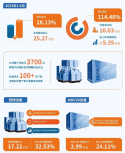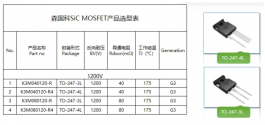I call upon our experts here: is this really as important as it is being described or is this your usual SCMP hype?
Revolutionising the semiconductor industry: Chinese scientists unveil 12-inch wafer with groundbreaking 2D materials
- Researchers have managed to produce new 12-inch wafers that are just one atom thick and have low production costs
- Work still needs to be done to transform them into a usable chip but scientists expect they will eventually complement silicon chips
A breakthrough in the production of a new two-dimensional (2D) material, which is the thickness of about one atom, is set to pave the way for the transition to next-generation semiconductors.
Chinese scientists have managed to use the new semiconductor material to produce 12-inch wafers. The milestone could see them complement traditional silicon chips.
As the new 2D material is so thin, it gives the wafers excellent semiconducting properties. But the team of scientists had to solve issues around the scaling up of the wafers’ size and being able to produce them at a high capacity.
In an exclusive interview with the Post, Professor Liu Kaihui of Peking University, who was the lead scientist on the project, said his team’s work had given assurance to the industry of the practical applications of the 2D material.
“A transistor built from a single layer of MoS2, [a typical 2D material] with a thickness of about one nanometre, outperforms the one made with the same thickness of silicon many times,” Liu said.
At each layer, 2D materials can exist separately, allowing them to be stacked layer by layer, like graphene or transition metal dichalcogenides (TMDs), including molybdenum disulfide, tungsten disulfide, molybdenum diselenide and tungsten diselenide.
“We developed a new approach, utilising a surface-to-surface supply method that ensures uniform growth,” PhD candidate Xue Guodong, first author of the paper, said. “While fabricating the MoS2 wafer, a chalcogenide crystal plate (ZnS) cooperating with solution-dispersed molten salts (Na2MoO4) is used as an element source,” he said.
Liu added that the new method means there are no longer limitations in the size of the wafers.
“The strategy ensures feedstocks are provided evenly and sufficiently in the furnace and solves the previous limitation in wafer size. We can also make larger ones, but 12-inch is the most commonly used size,” Liu said.
Once the size problem was solved, the team had to create a strategy for batch production. The proposed growth system is modularised and then packed into a pillar, like building a skyscraper. Because the gaps between the floors are filled with demand sources, the wafer grows very uniformly.
This stacking method means multiple layers of 2D materials can be grown simultaneously, leading to unparalleled efficiency and low production costs.
“Our engineering team at Songshan Lake Materials Laboratory designed equipment based on this method. Now our equipment can now produce 10,000 pieces of 2D wafers per machine per year,” Liu said.
While the wafers have been successfully fabricated, transforming them into usable chips still requires intricate design and engraving like photolithography and deposition. Yet, Liu is confident about the future.



